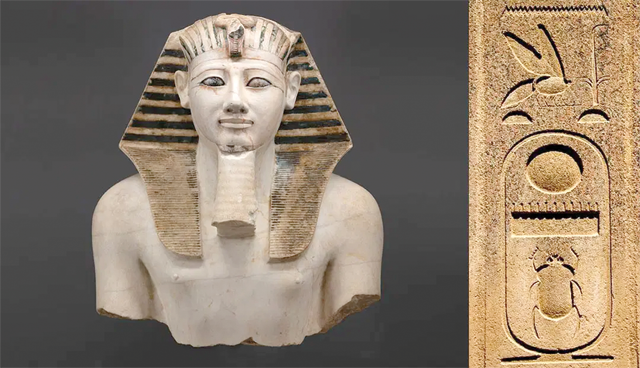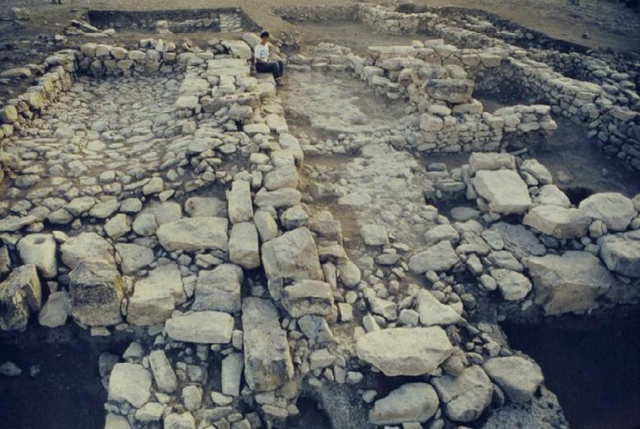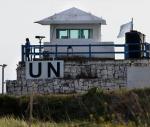You are here
About governance systems during Late Bronze Age in Levantine region
By Saeb Rawashdeh - Apr 04,2024 - Last updated at Apr 04,2024

A view from the south towards the site of Tell Hammam in the southern Jordan Valley (Photo courtesy of ACOR)
AMMAN — The Late Bronze Age had been characterised by the concept of the city-state, although it was not the case in the Levant until the Iron Age.
The term ‘city-state’ is not technically defined but is generally characterised as a local, independent political unit focusing on a central/capital city and its surrounding hinterland of fields and settlements, with limited regional political unity and influence.
This concept of city-state revolves around the key sites (often the largest or the
one with most historical references) and downplays the surrounding settlements.
Archaeological surveys have provided plenty of evidence for sites throughout the Jordan Valley.
The Amarna archives, from the Egyptian records, depict the political and economic landscapes of the Levant and its relations with Egypt.
“In general, the various rulers of these ‘city-states’ were in economic competition with each other and struggled to politically dominate another city-state. On occasions, they allied with one another to besiege a larger city or to defend themselves from one which was gaining too much power, “ said James Schaaf from The University of South Africa.
According to the Amarna correspondence, rulers of these cities usually carried the title of kings and princes.
Although the Egyptian literature appears to have the Levant divided into some administrative organisation with certain cities designated as administrative and garrison centres, it does not appear that they or the local rulers organised the Canaanite cities into any larger political entity.
Egypt was only interested in maintaining political allegiance in order to keep the trade routes open in their favour, secure tax revenue and conscript labour, therefore settlements clustered around important cross-roads, rivers and prominent urban centres,
“This is shown in the settlement clusters of the Jordan Valley, the
largest clusters being centred on both the fertile river plains of Beth-shan and Zarqa/Jabbok and the east-west routes into/out of the valley. Each cluster has a major site surrounding by many smaller, satellite sites,” Schaaf noted.
This was most prominent in the Zarqa triangle, Schaaf continued, adding that in the northern section, there were several major sites in close proximity which, the historical records show, competed and conflicted with each other.
“Still, people living in clusters or ‘nodes’ on the landscape that are closer to each other tend to interact more frequently and settlement clustering undoubtedly was molded by a variety of social and economic factors, among which the spatial definition of polities must have figured prominently,” Schaaf underlined.
These groups infer a unity of culture and social interaction between the northern and central sections of the Jordan Valley. The settlements in the south are much more scattered due to the soil and water conditions as well as being off the major international movement tracks.
“In Savage and Falconer’s spatial and statistical inferences of Late Bronze Age polities in the southern Levant, they concluded that there were four political units in the Jordan Valley and two in the western highlands. The two in the western highlands were centred on Jerusalem and Shechem. In the Jordan Valley, the most northern cluster, between the Sea of Galilee and the Nahal Tavor is actually centred on Tell Mukharkhash located near the crest of the Yisakhar Plateau. The other three are all centered on the valley floor: Rehob in the Beth-shan Valley, Deir ‘Alla in the Zanu and Nimrin) a clear cluster pattern of several small cities centred around one large site (Tell Hammam) that expands Savage and Falconer’s suggestion of city-state in this area is emerging,” Schaaf underlined.
This cluster has escaped inclusion into earlier studies on Middle Bronze city-states simply because excavations at these sites are relatively recent.
“Currently the ceramic and stratigraphy of the all the sites in this southeast cluster show only a Middle Bronze Age occupation with no Late Bronze Age strata. Therefore, the presence of a Late Bronze Age city-state in this southern section must be held back while the Middle Bronze Age city-state is explored further,” Schaaf underscored.
Related Articles
AMMAN — For decades, many scholars have attempted to connect the Bronze Age with urbanism in the Levant and some of the archaeologists and h
AMMAN — Many historical sources about the Late Bronze Age on the territory of the modern Jordan come from Egyptian archives.The oldest relev
AMMAN — The Early Bronze IV (c. 2,500- 2,000BC) in the ancient Near East was marked by a systematic change.



















